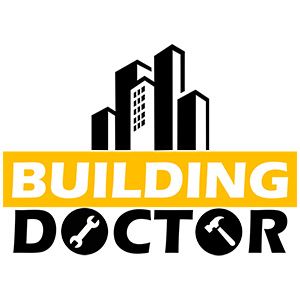What is concrete scanning?Posted by Building Repair Maintenance on February 9th, 2021 What is concrete scanning? The method of scanning concrete using one or more types of non-destructive technology is concrete scanning. This may include concrete-specific penetrating ground radar (GPR), a cover meter, a ferroscan system, or ultrasonic scanning equipment, maybe. Regardless of which of these tools is used, they can penetrate the ground and locate objects and anomalies within a specified depth range and various conditions. Our highly experienced engineers then interpret those anomalies; time served professionals who can tell you what lies beneath and, crucially, what might need to be avoided during any works due to take place. We have a range of different scanning options available at Perry Testing Limited. These include the Hilti Ferroscan PS250 and PS300, the ground-penetrating radar GSSI Structure Scan Mini and the Proceq GPR Live's advanced technology, enabling us to see down to greater depths than ever before. Again, regardless of which methodology is selected, scanning is a relatively quick and painless process; one that, on the whole, requires access to only one side of the concrete whilst frequently providing real-time, on-site images. The scans' results can often be quickly and easily exported into various software packages, including Word and CAD, allowing the operator to provide user-friendly and intuitive reports, frequently containing an accurate representation of what's hidden within the concrete. Our experienced engineers can identify reinforced steel, wires, utilities and more, depending on the equipment used and the design of the construction itself and analyse the structural nature of the concrete itself, searching for flaws, cracks and voids inside the material. Again, depending upon the nature of the structure itself, our engineers can provide useful information on the concrete's strength, density, and thickness. Why would I need concrete scanning? For various reasons, a large variety of construction projects, particularly renovations, can require the cutting or coring of a concrete slab. Those involved must be aware of anything below the service that may pose a danger to them, other people or the structure itself when doing this type of work. For example, if when cutting into a slab, the workers accidentally cut through a cable, reinforcement or a utility, the outcome could be costly and potentially dangerous. Due to the cost of repairs, the potential detrimental effects on both the program and budget or the trickle-down impact on other trades, it may be expensive to remove time and money from what are already stretched budgets. Potentially, if a cable buried inside a slab is placed under high stress, this may break through the concrete, likely harming workers when released. The highly detailed picture that scanning can often provide can help tradespeople and organisations avoid such incidents. Similarly, if an electrical cable is destroyed, it may lead to severe worker injury or even death and disruption to the electrical supply. On a time-critical project with a small budget, this can be expensive and time-consuming and not something you want. For the detection of structural flaws and voids, the concrete's scanning may also prove extremely helpful. Such problems could subsequently require remedial repairs, but, apart from that, one thing is for sure... Given the possible impact of not undertaking such investigative work, it is safer to see the whole picture than go blind and take the danger. The same goes for the concrete's density and thickness. Non-destructive scanning will provide greater assurance that protection and construction laws are being adhered to, depending on the structure's design. The scan offers on-site, real-time results in several situations, meaning minimal interruption and costs. This type of analysis can also be a handy tool for designers, engineers, and architects. Knowing how much reinforcement is contained within a slab (and where within the slab it lies) can provide a good idea of a structure's load-bearing capabilities. In renovation projects, it can give developers, engineers and trades (such as plumbers, electricians, HVAC contractors and so on) a heads-up as to exactly where they can and can’t drill without potentially costly and harmful clashes taking place. So, if you work in construction and need concrete scanning, why not get in touch? A member of our experienced, professional team will be only too happy to help. Like it? Share it!More by this author |


